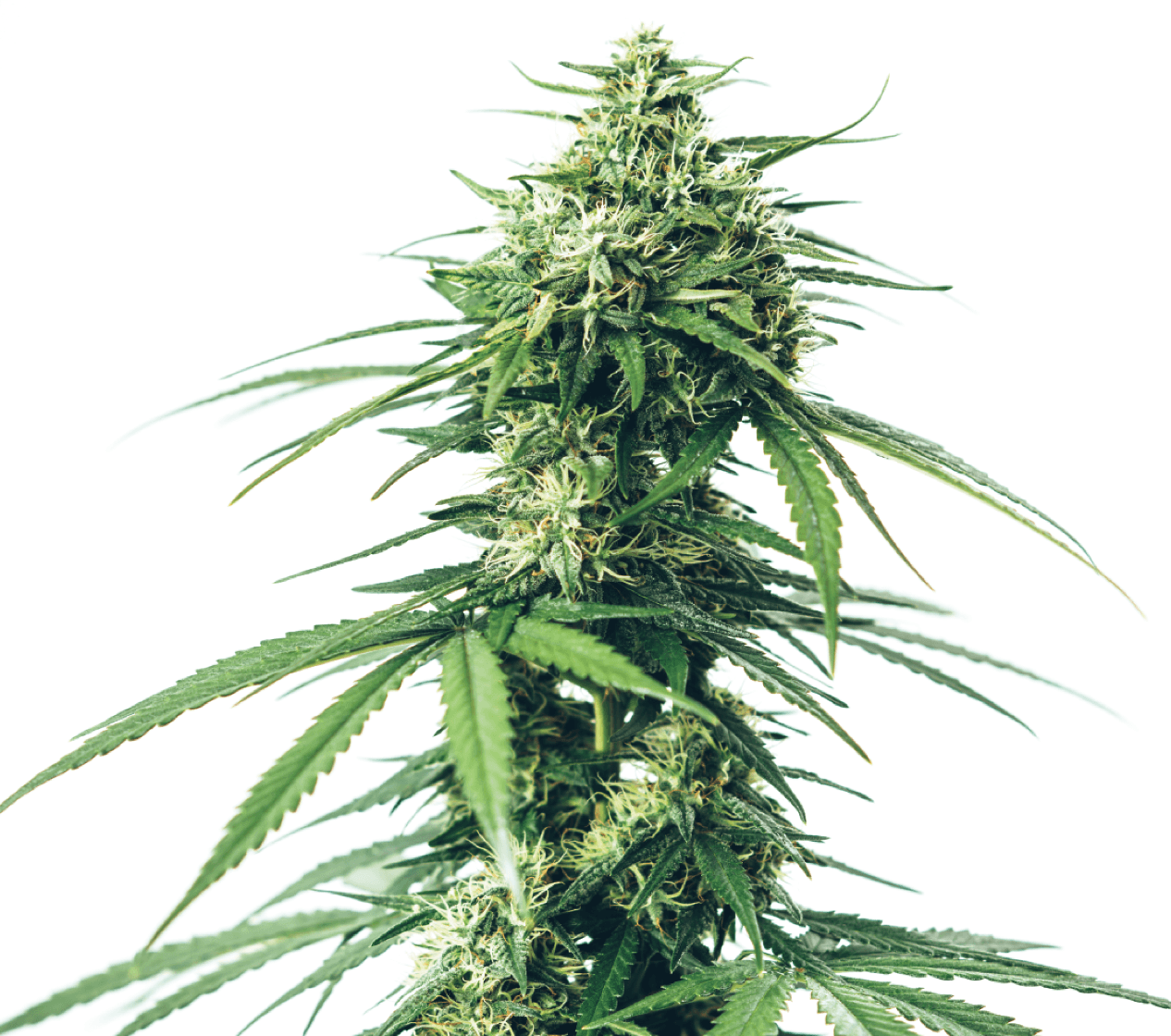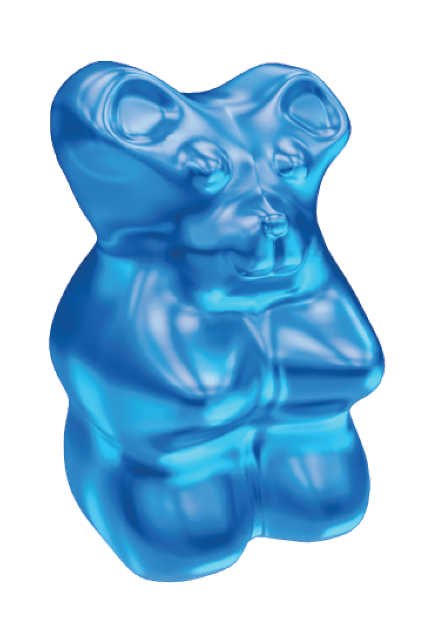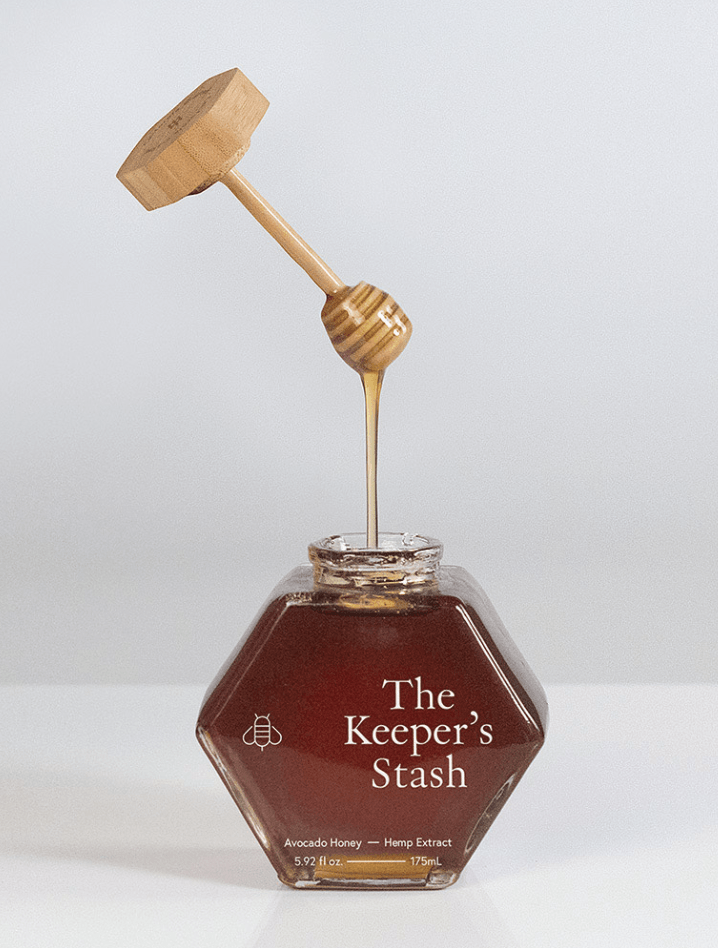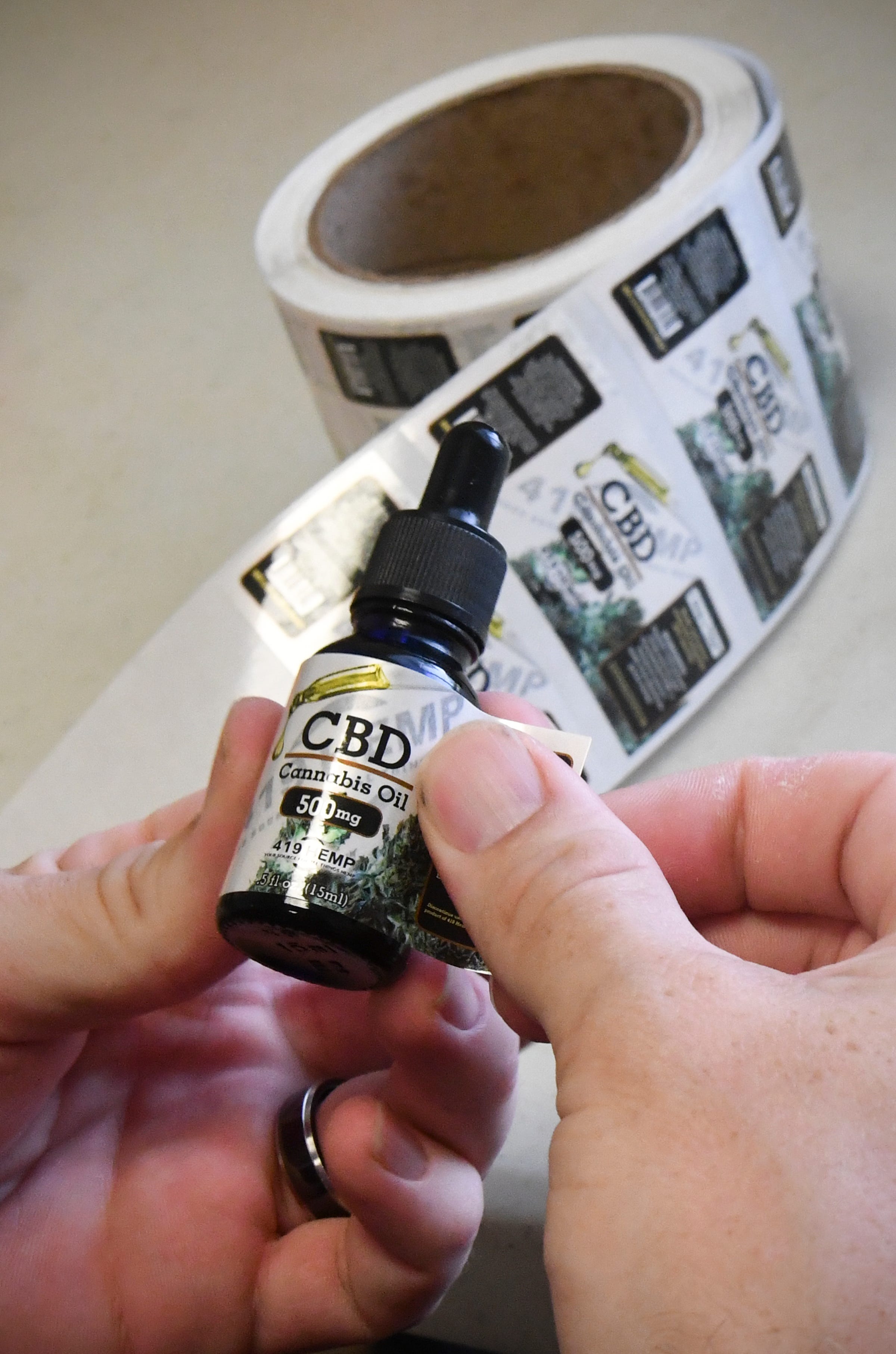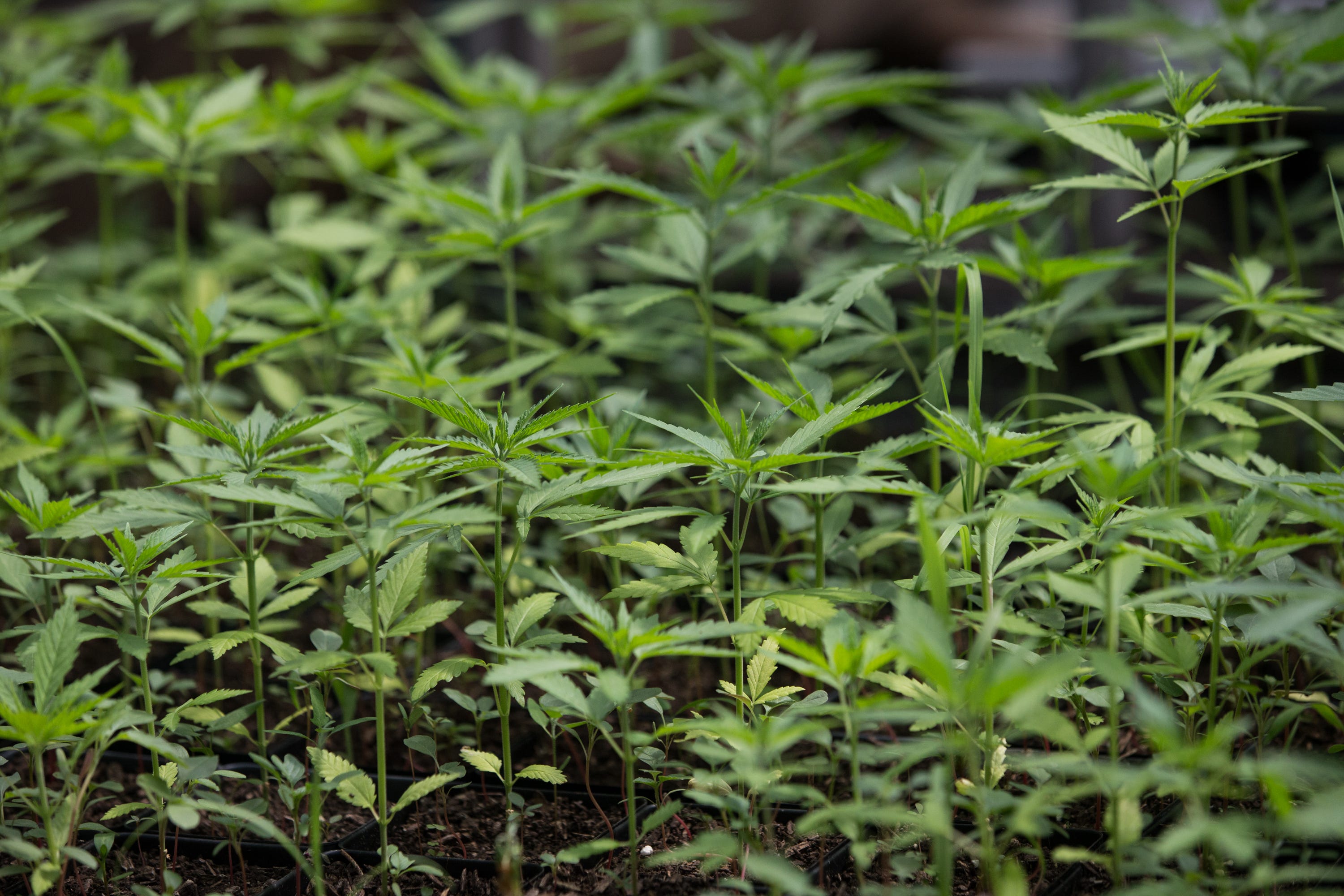CBD’s Everywhere, But What Does the Science Say?
The Anxiety Economy
Tens of millions of fidget spinners, fidget cubes and weighted blankets haven’t been sufficient to reduce the need for THC and CBD in the emerging anxiety economy.
THC (Tetrahydrocannabinol) works as an analgesic but also produces a psychoactive side effect known affectionately as a “high.” CBD (cannabidiol) possesses anti-anxiety properties but only induces calm, not euphoria.
In the last few years, millions of Americans suffering from anxiety, depression, insomnia and joint pain have embraced CBD. According to Brightfield Group, 41% of CBD users partake of it daily and an astounding 43% of CBD users choose cannabis instead of over-the-counter or physician-prescribed pharmaceuticals.
Despite the enthusiastic adoption of CBD, serious questions remain unanswered with respect to regulatory oversight, consumer protection, dosage
Cannabidiol (CBD) is finding a home these days in everything from skin creams and
selling products laced with CBD. But what’s the underlying story?
Does science back up the hype
tomorrow health fad?
High or not?
Cannabidiol (CBD) and tetrahydrocannabinol (THC) are both components of hemp and marijuana. THC gets users high, while most consider CBD merely relaxing. To say the least, CBD has recently attracted the attention of the popular press and the scientific community.
Marijuana and hemp come from different strains of the plant Cannabis sativa. Growers have bred marijuana strains for higher levels of THC, ranging from 25% to 40%. Hemp strains have been selected for higher levels of CBD and very low levels of THC, less than 0.3 % by federal law.
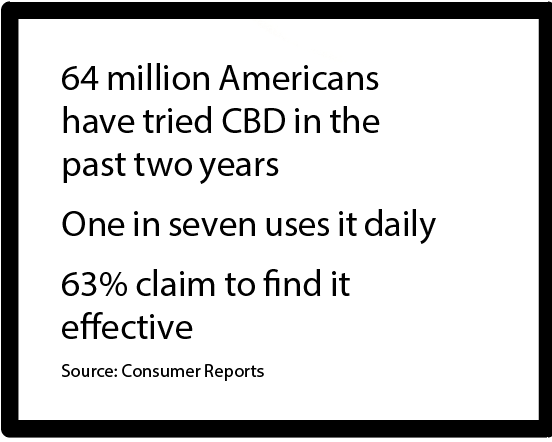
CBD’s uncertain potential
Users and entrepreneurs are touting CBD as a cure-all for a lengthy list of complaints and ailments. In two recent surveys, 38% to 55% of CBD users reported they use it for relaxation or to promote good health. CBD users in the studies cited at 15 medical conditions they attempt to treat with CBD.
The most common health problems cited in the surveys were pain, anxiety, depression and insomnia. As with many dietary supplements, advocates of using CBD to treat those conditions generally base their assumptions on animal studies, case reports or small clinical studies. Let’s look at what’s known about the usefulness of CBD for treating the top conditions.
Epilepsy
A prescription-only, oral form of CBD called
Anxiety
Its effectiveness is not so certain with anxiety. The positive effects of CBD in animal models of anxiety make a strong case for studying CBD in clinical trials, but the results in human trials have been mixed. Whether animal models truly represent human anxiety remains questionable. It’s also unclear from animal studies if long-term dosing maintains the positive effects of CBD on anxiety.
Clinical studies provide directly applicable data but researchers conduct many of the CBD clinical trials on anxiety disorders with only small numbers of patients. Results from small studies are more difficult to apply to the general population because of a lack of statistical power. In other words, a small study may exaggerate or underestimate the effects of CBD.
In addition, several clinical studies on the effectiveness of CBD for anxiety used THC as the anxiety-inducing stimulus. THC-induced anxiety may not provide a good representation of anxiety produced under other conditions. Most of the studies were single-dose studies and would be of limited value in assessing long-term effectiveness.

Pain
CBD and the combination of CBD and THC reduce pain in studies of animals, but evidence of the effectiveness of CBD alone on pain in humans is lacking. However, a study of a combination of THC and CBD for
But combining CBD and THC without a comparison to each agent alone makes it difficult to interpret those results. A comparison with the individual components would have made it possible to determine whether the effects were due to THC or CBD or unique to the combination of the two.
Depression
Evidence that CBD’s useful for treating depression seems to come solely from pre-clinical (animal) data. A 2017 review of using CBD in psychiatry found no clinical evidence that it alleviated depression.
Acne and inflammatory skin
But the topical ointment in that study included several natural ingredients besides CBD and did not include a control group using ointment without CBD. Those factors make it difficult to attribute the observed effects to CBD.
Other
Also, a small, single-dose study showed a decrease in resting blood pressure and decreases in the elevation of blood pressure in response to exercise and cold stress. Further studies may determine the significance of this effect.
CBD’s
Other side effects have included general weakness, trouble sleeping and infections. Because of the effects of CBD on alertness, caution should be used when driving or performing other tasks requiring concentration.
In addition, the way oral CBD is broken down in the liver can cause it to interact with a number of drugs. So check with a pharmacist before taking CBD. Another note of caution: CBD may harm a developing fetus. No data is available regarding the effects in pregnant women, so see a physician before using CBD during pregnancy or lactation.
CBD abuse
So where does CBD fall in the DEA rankings? The oral prescription-only form of CBD (Epidiolex) is a Schedule V controlled substance. Still, in tests, CBD did not produce drug-seeking behavior in animals or subjective effects similar to THC in humans. Tests also produced no evidence of dependence in humans who took CBD for 28 days.
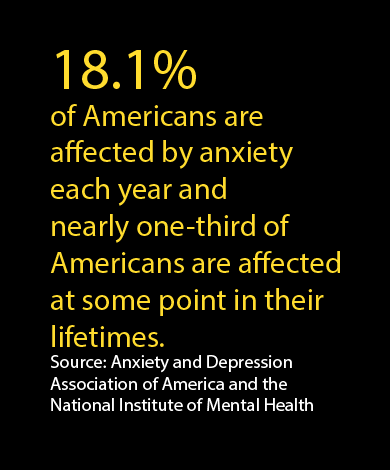
Taking CBD
CBD comes as an oil, in capsules, as a sublingual tincture (an alcohol-based solution dropped under the tongue), cartridges for
In addition, data is derived from studies of only one- or two-dose levels, so complete dosing information isn’t available. When it comes to dietary supplements and medications, more doesn’t equal better. Users should choose the lowest effective dose to decrease the chances of unwanted side effects.
Deciding on CBD
Except for treating two specific, rare forms of epilepsy in children, the clinical evidence for using CBD remains sketchy. Given the potential side effects and drug interactions, it’s difficult to justify using it.
Pharmacokinetic studies have shown people can absorb a significant amount of CBD into the bloodstream after application to the skin, so even topical application of CBD products may have adverse effects.
CBD products also have uncertain legal status. The Hemp Farming Act of 2018 legalized the growing of hemp in the United States. The Hemp Farming Act was passed as part of the larger farm bill The Agricultural Improvement Act of 2018.
However, in April 2018, The Ninth District Court of Appeals ruled that CBD is a Schedule I controlled substance under federal law (meaning it has abuse potential and no recognized medical use). Schedule I substances are regulated by the DEA and the FDA.
CBD is legal in states that have legalized medicinal or recreational marijuana. However, the Health Department of the State of Hawaii issued a statement in May that says selling CBD products to anyone without a medical marijuana card is illegal. The FDA and some states are working to develop regulations governing sales and safety monitoring for CBD products.
CBD in urine

CBD hype
Other claims need more supporting data. Wider acceptance and use should come only after more studies with larger numbers of subjects demonstrate that CBD works.
Unless researchers pick up the pace and begin producing more test data, or CBD develops into a true cultural phenomenon, expect to see a “For Lease” sign on that little CBD shop on the corner.
Portions of this story were previously published in The AGEIST
Mike James, Ph.D., a pharmacologist who’s published more than 20 peer-reviewed articles, has researched neuropharmacology, endocrinology, metabolic, oncology

